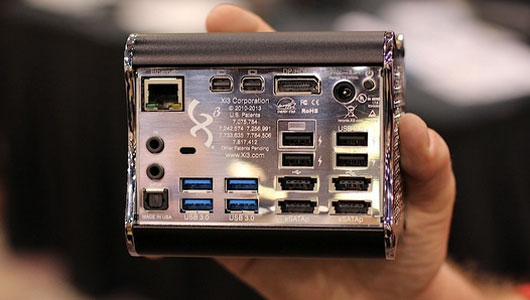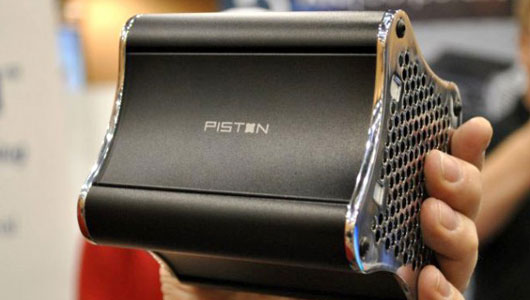It has recently come to my attention that there is widespread confusion over the matter of Valve’s ‘Steam Box.’ So I thought I’d write something to allay some of that confusion. A warning, though: This will get incredibly tech-nerdy.
The Steam Box is not a console.
I have quite purposefully given the above sentence its own line, as well as emboldening it. I did this because it is absolutely the most crucial information you need to know, going forward. What we all know as ‘consoles’ are in actuality computers designed with very specific hardware and operating systems, both aspects of which are unique to that console and controlled by its creator. This allows for a couple of advantages:
Firstly, the specificity of the hardware allows developers to code for what is often referred to as ‘target hardware.’ This means that — because they know exactly how the system is built from the ground, up — they can optimise the game or application to function as well as it possibly can do on that system.
Secondly, the company can sell their console at a loss (meaning that they sell each unit for less money than it cost to build). They can do this because they know they will almost always make that money back (and then some), on services they provide to their customers (Xbox Live, for example), and any games released on the platform (which get them a cut from each sale as well as from the developer or publisher, who must purchase a console-specific licence before they can release the game).
PCs do not have these advantages. A gaming PC can be made up of all sorts of components from any number of manufacturers based on any number of chipsets. So when a game developer is coding for PC, they have no target hardware. Instead, they need to code more generally, just enough to ensure it will run on pretty much anything built in the past several years. It is then the responsibility of nVidia and AMD — with some help from the development engineers — to release drivers for their respective GPUs that will ensure the game runs as well as it can do. But this process will almost never be as ultimately optimised as it would be with target hardware in mind.
As for unit cost for the consumer? Gaming PCs, like consoles, cost a lot to make. Unlike consoles, however, they are built by companies that generally don’t publish or distribute games. What this means is that when, for example, Dell sell you a PC, they will never get a cut of any game purchase you make. Microsoft would from the Xbox game you buy, Sony would with the PlayStation game you buy, and Nintendo, also. Dell, though, would not. So their only option is to sell their gaming PCs at a price that covers the cost of production, plus some extra on top so as to make some sort of profit.

“That’s all lovely, Kev, but what on earth does this have to do with the Steam Box?” I hear you ask. Put simply, Gabe Newell confirmed, quite openly, at CES this year that the term Steam Box does not belong to a product, rather it is a product category. Much like Ultrabooks are a category within Laptops, Steam Boxes will be a category within gaming PCs. So ultimately, it is a PC. Not a console.
Steam Boxes will be built by any PC-building company that wants to make one. There may be Dell Steam Boxes, HP Steam Boxes, and so on. The recently-priced Piston Xi3 is one such variant of the Steam Box product category, and people have figuratively exploded over that $899 price tag. So here we are, the meat of this article, in which I use the silly amount of preface I’ve laid out to explain why this is so expensive, and why Valve’s own Steam Box may not be.
Put simply: The Piston Xi3 (and others that will be like it), is a gaming PC designed with Steam as its front-running feature. My speculation is that it will boot up into Steam’s Big Picture Mode, thus giving it that console feel, but outside of that screen UI it is still just a PC. Piston will never get any money from you beyond the initial purchase and thus must charge to recoup their unit production costs plus some reasonable profit. That’s why it’s so expensive. It’s a gaming PC. Not a console.
There are a couple of things to keep in mind within this category, though. First and foremost, it has not been confirmed whether these Steam Boxes will have to follow specific hardware designs in order to qualify for the title. If that turns out to be the case, developers will finally have some idea of target hardware for the PC platform. That would mean an easier job for the developer, the GPU driver engineers, and a more optimised experience for the player.
The second thing to consider is that Valve have stated that they too will release a Steam Box. Now, this is where things get interesting. As a publisher and, most notably, a distribution platform holder (Steam, itself), Valve will make money from your purchases of Steam games and even more from anything published by themselves. This puts Valve in a position to build a gaming PC at cost, and then sell it to the consumer at a loss, in the same way that Microsoft, Sony and Nintendo (with the Wii U, at least), do now. If ever there will be a sub-$500 Steam Box, it’ll be Valve’s.
The issue with this outcome, of course, is that it’ll cause nothing but grief for the OEMs (HP, Dell, etc.). After all, why would anyone in their right mind buy a Steam Box for the better part of $1000 when they could buy Valve’s for half of that. I don’t know how retail competition regulation works, but I’m sure it’d be frowned upon.
I hope that clears up at least some of the confusion amongst you. I had not realised prior to the morning of writing this that it was such a cloudy issue. In summary, the Steam Box is not a console.
Tags: Piston Xi3, Steam, steam box, Valve



I think the real problem with the Piston isn’t the cost itself but it’s value for money. For $900+ you can build a very powerful computer that would blow the Piston away because it’s woefully overpriced for its specs. The piston can’t compete with current current consoles on cost and can’t compete with next gen consoles or PCs for performance. I really don’t see this going down well in any market.
Can a “PC” that small really be any good for gaming? Being that expensive I can’t see it selling well. Despite your best arguments and I agree with Kev here, most people are going to see this as a console and because of that, they will think of it as vastly overpriced. Also, that is one ugly-ass machine. That back panel, ugh…
Really informative article.totalbiscuit thoughts on it are that it is quite awful and doesn’t work. £900 is so much…